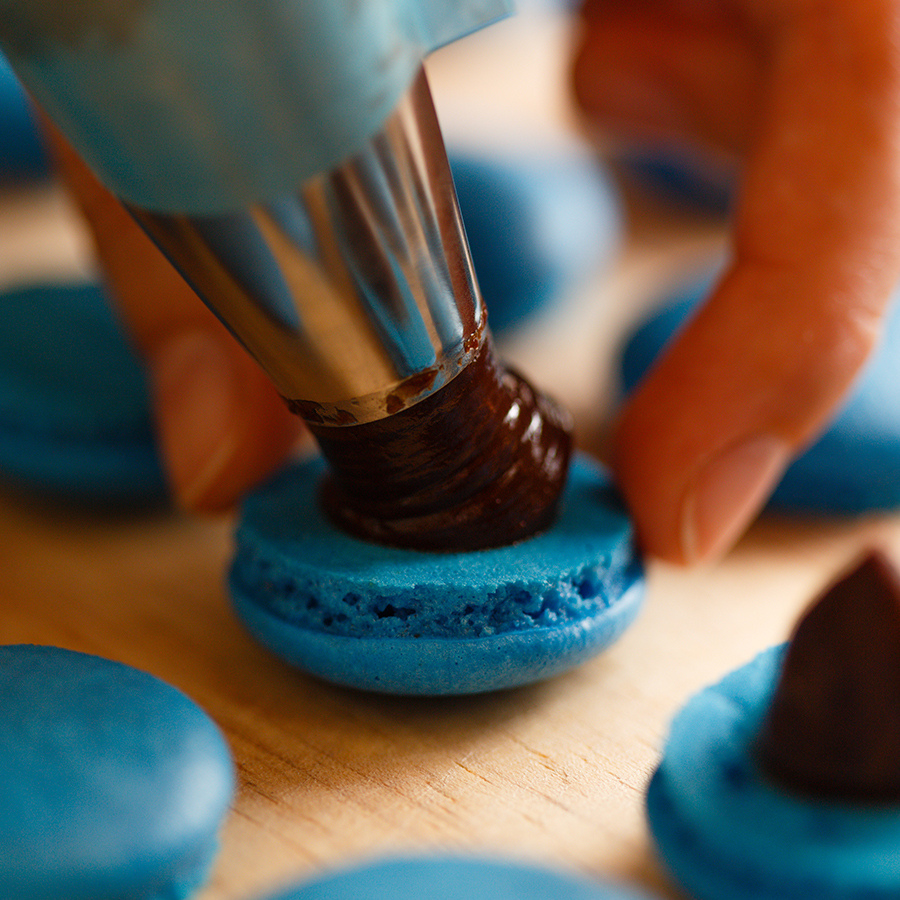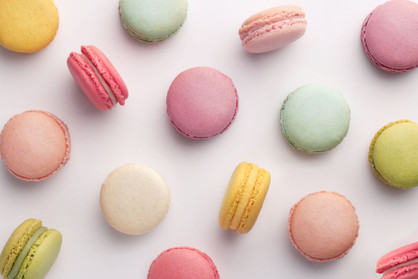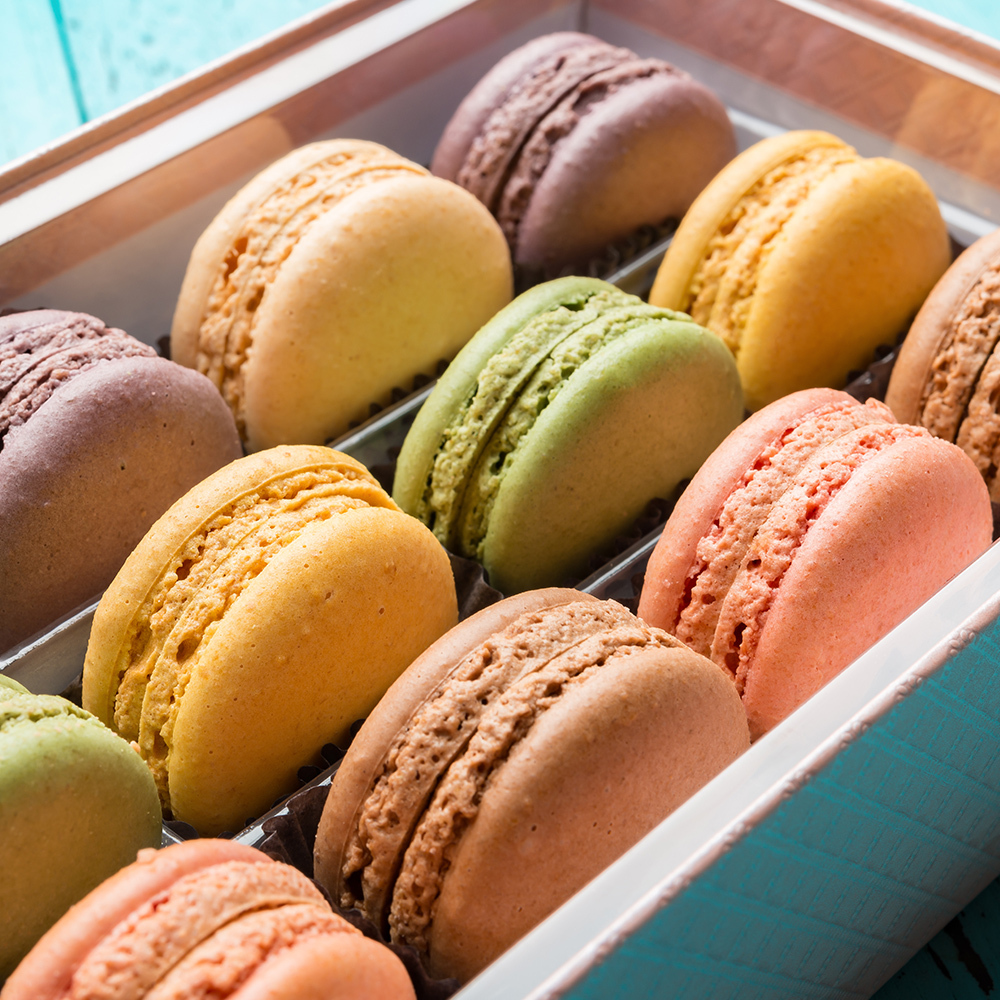Jul 9th 2020
The Ultimate Guide to Making Perfect French Macarons
French macarons have a reputation for being tricky to master.
But the truth is, once you have the right recipe and follow each step carefully, the results can be absolutely stunning. If you’ve ever been intimidated by the delicate, crisp, and chewy texture of these iconic pastries, this detailed, step-by-step guide will walk you through every stage of making perfect French macarons. Get ready to impress yourself and your loved ones with beautifully crafted, homemade macarons!
Ingredients (Yields 20 Macarons or 40 Shells)
To make authentic French macarons, you will need a precise balance of ingredients. Measuring them accurately is crucial to achieving the right texture and structure.
- 65g of egg whites (aged at room temperature)
- 40g of granulated sugar
- 150g of powdered sugar
- 85g of almond flour
- 1 pinch of Cream of Tartar or salt
- Optional: Food coloring (gel or powdered is recommended to avoid altering the consistency)
Essential Equipment to make French macarons
Having the right tools can make all the difference when preparing macarons. Here’s what you need:
- Macaron Mat: Best with macaron template on it, it helps with piping.
- Pastry Bag: We like silicone, washable and reusable bags.
- Round Macaron pastry tip: Preferably ¼” in diameter.
- Mixing Bowls: glass or metal is great.
- Fine Mesh Sifter: To remove any lumps from the dry ingredients.
- Electric Mixer: Handheld or stand mixer for whipping egg whites.
- Spatula: for the macaronnage step.
- Baking Sheet: Flat and sturdy for even heat distribution.
- Oven Thermometer: Optional, but helpful to ensure your oven temperature is accurate.
Step 1: Prepare Your Egg Whites
The first and most crucial step in macaron-making is properly preparing your egg whites. This simple step can significantly impact your results.
- Boxed egg whites are not an option. They ar epasteurised and it chenges the structure of the egg white.
- If possible, seperate the egg whites and yolk in advance (48h is great). Store them in a closed container in the fridge. This helps them whip up with better stability.
- Make sure there is no yolk at all in the egg whites.
- Remove the egg whites from the refrigerator at least two hours before baking. Allowing them to reach room temperature improves their ability to whip into a strong meringue.
- Ensure your mixing bowl is completely grease-free by wiping it with a little vinegar or lemon juice before adding the egg whites.
Step 2: Sift and Mix Dry Ingredients
Macarons require a fine, smooth batter, which means sifting is essential.
- Combine the powdered sugar and almond flour in a bowl.
- Sift the mixture twice using a fine mesh sieve to remove any lumps and aerate the mixture. If you find any large almond pieces that don’t pass through the sieve, discard them.
- Set the sifted dry ingredients aside while you prepare the meringue.
Step 3: Make the Meringue
A stable meringue is the foundation of successful macarons.
- Place the room-temperature egg whites into a mixing bowl.
- Add a pinch of Cream of Tartar or salt to help stabilize the meringue.
- Using an electric mixer, begin whipping the egg whites on low speed until they become foamy.
- Gradually add the granulated sugar, one spoonful at a time, while continuing to beat.
- Increase to medium-high speed and whip until stiff peaks form. This means that when you lift the beater, the peaks should stand upright without collapsing.
- If you’re adding food coloring, now is the time! Fold in a small amount of gel or powdered food coloring for best results.
Step 4: Macaronnage (Folding the Batter)
The macaronnage process is crucial for achieving the correct batter consistency.
- Gently pour the sifted dry ingredients over the meringue.
- Using a spatula, begin folding the mixture by scraping around the sides and gently pressing the batter against the bowl.
- Continue folding until the batter flows like lava—it should form ribbons that slowly disappear into the rest of the batter within 10-15 seconds.
- Be careful not to overmix or undermix. Overmixed batter will be too runny, and undermixed batter will be too thick, resulting in cracked or lumpy macarons.
Step 5: Pipe the Macaron Shells
![]()
Now it’s time to shape your macarons.
- Preheat your oven to 300°F (150°C).
- Transfer the batter into a pastry bag fitted with a round tip.
- Pipe small circles onto the macaron mat or parchment paper, leaving at least 1-inch spacing between them.
- If you see air bubbles, tap the baking sheet on the counter a few times to release them. You can also use a toothpick to pop any visible bubbles.
Step 6: Resting the Macarons
Resting is essential to achieving macarons with smooth tops and proper feet.
- Let the piped macarons sit at room temperature for 15-30 minutes, or until the tops form a thin skin.
- To check readiness, gently touch a shell—if it doesn’t stick to your finger, they’re ready to bake.
Step 7: Bake the Macarons
- Place the macarons in the middle rack of the oven and bake for 15-18 minutes.
- Halfway through baking, rotate the tray to ensure even cooking.
- The macarons are done when they have formed a firm “foot” (the ruffled bottom edge) and the tops are set and smooth.
- Remove from the oven and allow them to cool completely before attempting to remove them from the mat.
Step 8: Fill the Macarons
 Once cooled, it’s time to fill your macarons!
Once cooled, it’s time to fill your macarons!
- Choose a filling such as buttercream, ganache, jam, or curd.
- Pipe a small amount of filling onto the flat side of one shell and gently sandwich it with another.
- Avoid overfilling, as macarons should have a balanced texture and taste.
Step 9: Maturing the Macarons
For the best flavor and texture, macarons should rest in the fridge for 24 hours before serving.
- Store them in an airtight container in the refrigerator.
- Before eating, let them come to room temperature for about 10 minutes.
Final Thoughts
Congratulations! You’ve successfully made authentic French macarons from scratch. While macarons can be finicky, practice and patience will help you perfect your technique. Remember these key tips:
- Use aged egg whites for better stability.
- Sift dry ingredients to achieve smooth shells.
- Don’t rush the macaronnage process—get the right consistency.
- Let the piped macarons rest to form a skin before baking.
- Allow macarons to mature overnight for the best taste!
- Enjoy your homemade French macarons and feel free to experiment with different flavors and fillings. Happy baking!
To go with this macaron recipe:
- Our Macaron tutorial: A video of our founder Isabel making the macarons.
- The professional equipment we use in our macaron cooking classes:
- Macaron Mat
- Pastry Bag
- Macaron Pastry tip
Macarons filling recipes:
- Lemon curd
- Heart shaped dark chocolate raspberry
- Salted caramel
- Champagne and white chocolate ganache
- Dark chocolate
- Milk chocolate Ganache
- Cream Cheese
- Raspberry curd
- Vanilla and white chocolate
- Milk chocolate passion fruit ganache
- Gingerbread Chocolate ganache
- Lavender chocolate ganache
- Chocolate pumpkin spice ganache
- Orange chocolate ganache
- Goat cheese Cream
- Foie gras


